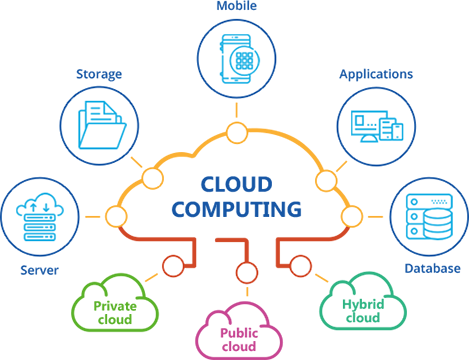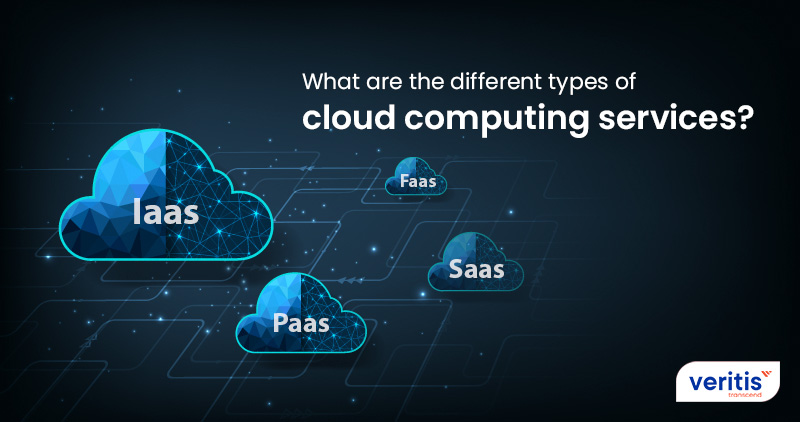Revolutionize Your IT Facilities With Cloud Provider
In the ever-evolving landscape of IT infrastructure, cloud services have arised as a game-changer for companies looking for to increase and improve operations effectiveness. The change towards leveraging cloud services uses a myriad of benefits that can improve the way organizations function, from optimizing costs to making sure smooth scalability. However, the real concern stays: Exactly how can companies properly navigate this transformative trip and harness the complete capacity of cloud services to remain in advance in today's open market?
Benefits of Cloud Services
Cloud solutions provide numerous benefits to companies and companies looking for to enhance their IT framework. Furthermore, cloud services offer scalability, making it possible for companies to easily readjust their resources based on need.
One more benefit of cloud services is improved availability. By storing information and applications in the cloud, workers can access them from anywhere with a net connection. This boosts collaboration and performance, especially for remote or distributed groups. In addition, cloud services use enhanced safety actions, such as data encryption, routine back-ups, and durable gain access to controls. This aids protect sensitive info and makes certain conformity with information protection policies. Generally, the advantages of cloud solutions make them an engaging selection for companies wanting to modernize their IT infrastructure and drive advancement.
Movement Methods for IT Framework
In the world of updating IT infrastructure, reliable migration strategies are vital for making certain seamless shifts and maximizing operational performance. When intending the movement of IT infrastructure to the cloud, organizations have to initially carry out a detailed evaluation of their current systems and workloads. This assessment assists in identifying which parts are ideal for migration, approximating prices, and setting reasonable timelines.
One common migration approach is the "lift and change" approach, where existing information and applications are relocated to the cloud with minimal adjustments. While this technique fasts, it might not totally take advantage of the benefits of cloud solutions (linkdaddy cloud services). An even more tactical approach entails rearchitecting applications to be cloud-native, taking benefit of the scalability and flexibility offered by the cloud environment
In addition, organizations can choose a phased migration, where applications are relocated incrementally to the cloud. This technique enables screening and optimization at each stage, decreasing the danger of interruptions to core company operations. By meticulously implementing and preparing migration approaches, companies can efficiently transition to the cloud while reducing downtime and making best use of effectiveness.
Enhancing Protection in the Cloud
Executing durable protection measures is imperative when transitioning IT facilities to shadow solutions, ensuring data honesty and privacy are kept at all times. Safety and security in the cloud includes a multi-faceted strategy that encompasses various layers of security. Security plays a critical duty in safeguarding data both in transit and at rest within the cloud environment (linkdaddy cloud services). By encrypting data, also if unauthorized access occurs, the information remains indecipherable and pointless to destructive stars.
Additionally, solid accessibility controls and verification devices are essential components of cloud security. Executing role-based access control guarantees that only licensed workers can access delicate data and carry out certain activities within the cloud her explanation framework. Multi-factor authentication adds an added layer of security by calling for individuals to provide multiple kinds of verification before accessing essential resources.
Regular safety and security incident, monitoring, and audits feedback treatments are important for identifying susceptabilities and responding promptly to any kind of safety and security violations. By constantly improving and reviewing security measures in the cloud, organizations can minimize threats and preserve a durable safety posture in the ever-evolving electronic landscape.
Cost-Efficiency and Scalability
Making best use of operational effectiveness while ensuring smooth expansion is an essential element of modern-day IT facilities monitoring. linkdaddy cloud services. Cloud services use an economical solution for services looking to enhance their IT procedures. By leveraging cloud resources, organizations can scale their framework up or down according to require, getting rid of the demand to purchase expensive equipment that might become outdated promptly. This pay-as-you-go model enables for far better cost control, as business just spend for the resources they make use of.

Driving Innovation With Cloud Adoption
Facilitating technological improvements, cloud fostering empowers services to drive technology and remain competitive in today's swiftly evolving digital landscape. By leveraging cloud solutions, companies can streamline their procedures, increase agility, and promote a society of experimentation and creative thinking. The cloud offers a scalable and adaptable environment that encourages the advancement of originalities and solutions without the constraints of conventional IT facilities.
Among the vital means shadow fostering drives innovation is through enabling rapid prototyping and testing of new product or services. With cloud resources readily available, companies can rapidly spin up prototypes, gather feedback, iterate on designs, and bring innovative solutions to market faster than ever. This sped up technology cycle enables companies to stay ahead of the curve and fulfill the transforming needs of clients in real-time.
Furthermore, cloud services offer access to advanced modern technologies such as man-made knowledge, artificial intelligence, and huge data analytics, which are necessary for driving innovation in today's data-driven globe. By using these modern technologies with the cloud, companies can reveal important insights, automate processes, and create customized experiences that set them in addition to rivals. Embracing cloud adoption not just reinvents IT infrastructure but likewise pushes companies in the direction that site of a future of constant development and development.
Verdict

In the ever-evolving landscape of IT facilities, cloud services have actually arised as a game-changer for organizations looking for to enhance operations and boost efficiency.Cloud solutions provide various benefits to companies and companies seeking to improve their IT infrastructure. In general, the advantages of cloud services make them an engaging choice for companies looking to update their IT infrastructure and drive technology.
Executing robust safety and security actions is essential when transitioning IT framework to cloud solutions, ensuring information integrity and privacy are kept at all times.In final thought, cloud solutions provide countless benefits for reinventing IT infrastructure, consisting of cost-effectiveness, scalability, boosted safety and security, and technology opportunities.